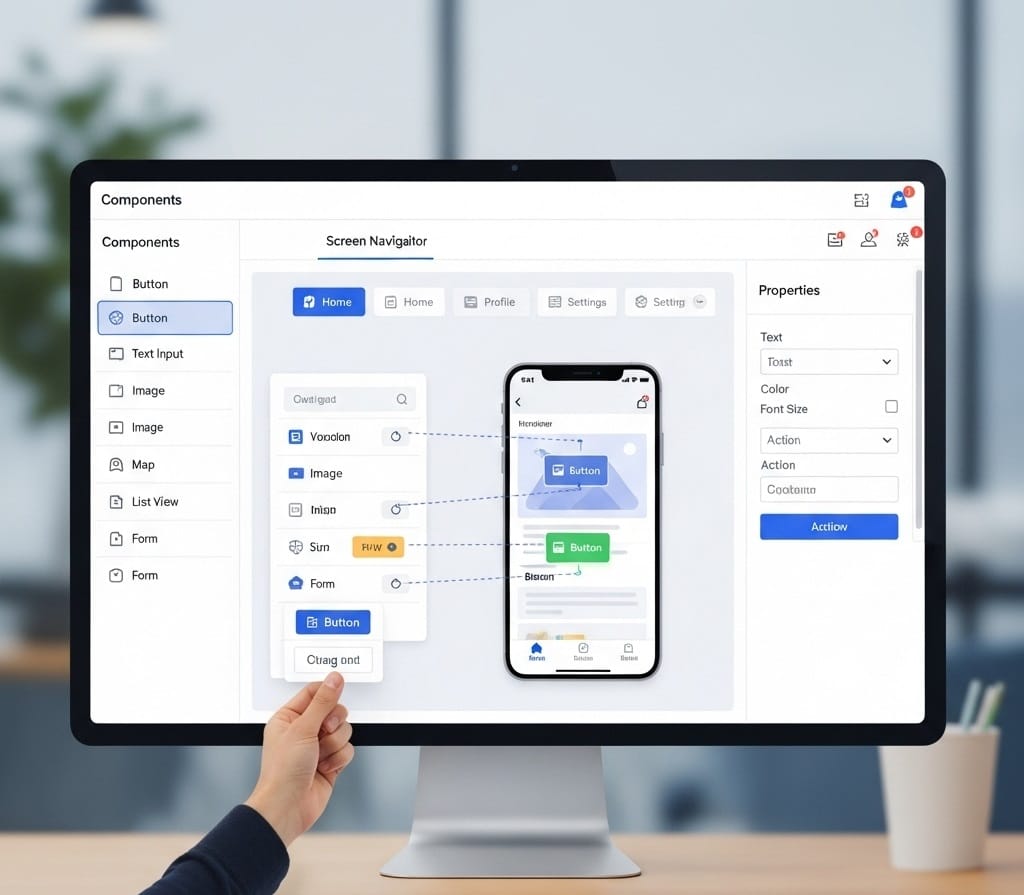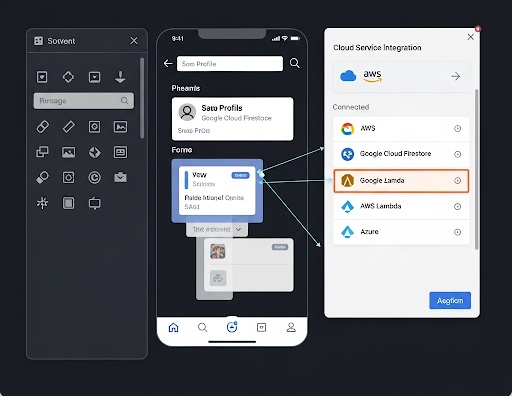Low-code mobile development is transforming how enterprises build mobile apps. This approach enables rapid, cost-effective solutions that meet customer and business needs. Explore why major companies are investing heavily in low-code platforms, with insights, stats, and examples to guide your decision.
What Is Low-Code Mobile Development?
Low-code mobile development uses visual interfaces, drag-and-drop tools, and pre-built templates to create apps with minimal coding. Unlike traditional methods requiring expertise in Swift or Kotlin for an ios application development service, low-code simplifies app creation for iOS and Android. Platforms like OutSystems and Mendix empower both developers and non-technical teams.
This hybrid approach balances speed and customization, ideal for enterprises managing complex workflows and tight deadlines. It streamlines app development while supporting custom code when needed.
Also Read: Stuck with AI App Builders Like Replit?
Top 5 Reasons Enterprises Choose Low-Code Mobile Development
Enterprises are adopting low-code platforms to address challenges like developer shortages and rising costs. Here’s why low-code mobile development is a game-changer.
1. Faster Time-to-Market
Low-code platforms cut app development time by 50 to 70 percent compared to traditional coding. Developers use reusable components and automated testing to launch apps in weeks, often starting with mvp software development to test ideas quickly. For example, a customer-facing inventory app can integrate APIs swiftly, keeping businesses competitive.

2. Lower Development Costs
Hiring mobile developers costs over $150,000 annually in the US, excluding training. Low-code reduces expenses by up to 70 percent through efficient workflows and less debugging. Maintenance is also cheaper, as updates don’t require codebase overhauls.
3. Empowering Non-Technical Teams
Low-code enables “citizen development,” where non-technical staff like business analysts build apps using an application development service. This reduces IT backlogs and fosters innovation. For instance, a sales team can create a CRM app independently, with 84 percent of enterprises reporting broader development participation.
4. Scalable and Integrated Solutions
Low-code platforms support enterprise-grade security and cloud integration with AWS or Azure. They connect seamlessly with legacy systems and scale for features like IoT or AI. This ensures mobile apps align with broader digital strategies.

5. Agility for Market Changes
Low-code enables quick updates for regulations or market shifts, reducing technical debt with modular designs. During disruptions, companies using low-code adapted faster to needs like remote work tools. This flexibility drives strategic advantages.
Also Read: How to Get Back on Track in Game Development with Rosebud AI
Key Stats on Low-Code Mobile Development
Data highlights the rise of low-code platforms for enterprise mobile apps:
| Metric | Insight | Year |
| Market Size | $26.3 billion in 2025, growing to $67.12 billion by 2030 at 20.61% CAGR | 2025 |
| Adoption Rate | 70% of new enterprise apps will use low-code/no-code by 2025 | 2025 |
| Enterprise Usage | 98% of enterprises use low-code platforms or tools | 2025 |
| Developer Involvement | 87% of enterprise developers use low-code | 2024-2025 |
| Future Growth | Market to reach $187 billion by 2030 from $45.5 billion in 2025 | 2025-2030 |
By 2024, over 65 percent of app development relied on low-code or no-code platforms, addressing a global developer shortage of 4 million by 2025.
Success Stories: Low-Code in Action
Real-world examples show low-code’s impact on enterprise mobile development:
- Bendigo Bank (Australia): Built mobile banking apps 60 percent faster, adding features like biometric logins for better engagement.
- North Carolina State University: Created campus service apps, enabling non-IT staff to manage updates and cut costs.
- Saga (Insurance Giant): Developed personalized mobile apps integrated with legacy systems, boosting user satisfaction.

Addressing Low-Code Challenges
Low-code may face issues like vendor lock-in or performance limitations for complex apps. Enterprise-grade platforms mitigate these with open standards and robust security. Start with a pilot project and choose platforms with strong support to minimize risks.
Is Low-Code Right for Your Enterprise?
Low-code mobile development offers speed, savings, and scalability for a mobile-first world. With markets growing and adoption soaring, it’s a strategic shift for enterprises facing app backlogs or innovation delays. Explore low-code platforms to transform your mobile strategy.








